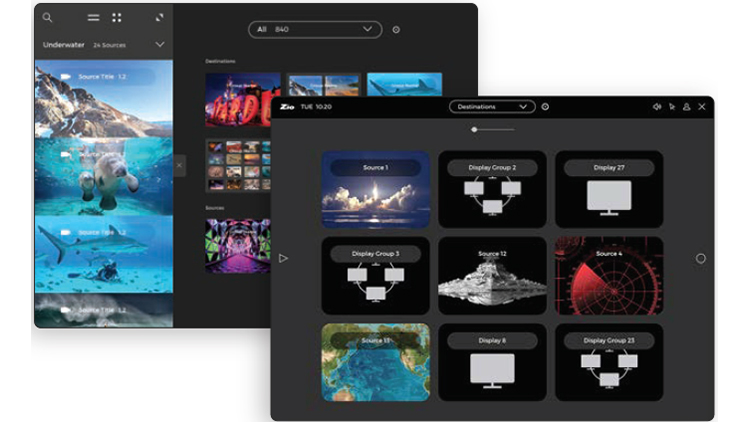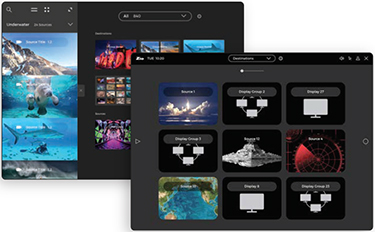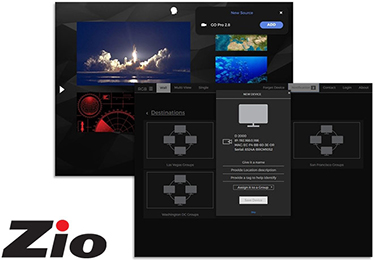The Agile Control Room: What’s UX Got to Do With It?

For technology professionals, the focus is often on the hardware, configuration software, and physical considerations like racks, cooling, and cabling. For the users of AV systems, much—if not all—of that is invisible, and the only thing that matters is the interface for controlling the system. The average knowledge worker is probably not thinking about the network switches, rights access system, and file servers when accessing a centrally stored Excel spreadsheet from a shared network drive. This is conceptually the same with the control interface for an AV system. The average user is only thinking about what needs to be seen and heard and where it needs to be seen and heard.

Mission-critical AV systems elevate the importance of the interface design. Time and accuracy become paramount, and mistakes with AV system control are not just an inconvenience, they have real and immediate consequences. What the user experiences in trying to control the system is what defines its usefulness. This is what “UX” refers to with regards to highly agile and mission-critical AV systems. Sometimes there is confusion that UX only means how pleasant, bright, organized, and easy a device is to use. But in the modern agile control room, the experience extends to performing the correct action, performing it quickly, and knowing that it has been done.
"UX is even more prominent in systems that are of a critical nature, such as control rooms, war rooms, hospitals, and life safety systems," explained Steve Greenblatt, CTS, the president and founder of Control Concepts, a leading provider of specialized software and services for the audiovisual industry.
Greenblatt added that users in contemporary command and control spaces must have information and controls at their fingertips, with the access and ability to make split-second decisions. Furthermore, they need to have the confidence in knowing that they are 'in control’ of the system.
- "There may be no leeway for user error nor time to hunt for the right button or become oriented with the UI," Greenblatt said. "If an AV system is not easy to operate and or doesn’t satisfy a need, it does not have value to the user."
One only needs to read a handful or press releases from the last InfoComm event to see the word “intuitive” attached to nearly any AV product solution and interface. Unlocking what truly makes a control system intuitive is much larger than a bullet point on a datasheet.
A theoretically ideal interface allows the user to perform the exact function desired, without hesitation, in minimal steps, accurately, and without training. That is a high expectation, and there are different interpretations of what that all means. While there is grey area, the latter point, a control interface that requires no training, encompasses the other points, and gets at the heart of what would be an ideal interface. A simple toggling light switch is a nearly ideal interface. We had all been trained on how it works by just the experience of seeing someone else do it when we were young. There is one action to perform. It is a simple action, it can be done with a high degree of accuracy, and if the light is functioning properly, there is instant feedback that it worked.

Even in a mission-critical command center, the AV system control interface should be this straightforward. A simple action learned easily by experience, with limited sorting of options, a high degree of predictable accuracy, and instant feedback indicating the result of the action performed. In mission-critical applications, both time and accuracy are of great importance for effective operation and excellent user experience. The design and implementation of the interface is a crucial part of this. The systems behind the interface must be robust, with low-latency, flexibility, and reliability; but sub-frame latency is only so useful if a user needs ten seconds to figure out how to perform a function.
A daily selection of features, industry news, and analysis for tech managers. Sign up below.
An interface that can achieve this kind of user experience is possible with the right hardware and collaboration between those who use the room and those who will be designing the system.
The control system, its infrastructure, and how it operates cannot just be afterthoughts attached to a gear list and wiring schematics. Careful consideration of the needs of the room and its users, and open collaboration are critical and must occur as early in the design process as possible.
AV Technology magazine's technical advisor, Justin O'Connor, has spent nearly 20 years as a product manager, bringing many hit products to the professional AV industry. He earned his Bachelor’s degree in Music Engineering Technology from the Frost School of Music at The University of Miami. Follow him at @JOCAudioPro. Subscribe today for The Agile Control Room newsletter sponsored by RGB Spectrum (distributed twice per month, every other Tuesday).
The Agile Control Room Resources: Hot Products
RGB Spectrum’s Zio Encoders and Decoders: HD & 4K Video over IP
https://www.rgb.com/products/zio-encoders-decoders
InfoComm17 Special Report: 21 Products and Stories Worth the Hype
https://nbmedia.wufoo.com/forms/zt7wmvz0w7t5y4/
DVIGear DisplayNET:10GbE Ethernet Platform for AV Distribution
http://www.dvigear.com/displaynet.html
Software Defined Video over Ethernet (SDVoE)
http://sdvoe.org/
White Paper: KVM over IP
https://www.black-box.de/en-de/page/21084/Resources/Technical-Resources/Technology-Overview/KVM-over-IP-FAQs
Featured Case Study:MediaWall Unifies Telemetry Monitoring Operations for Wisconsin Medical Center
https://www.rgb.com/news/mediawall-unifies-telemetry-monitoring-operations-wisconsin-medical-center
Control Concepts, Inc
The Agile Control Recent Headlines
Copy-Protected Content: More a Business Challenge than a Technical One?
http://www.avnetwork.com/avtechnology/copy-protected-content-more-a-business-challenge-than-a-technical-one/126831
Network and CODEC Specifics for In-Room and Multi-Room AV-Over-IP: Part 1
http://www.avnetwork.com/avtechnology/network-and-codec-specifics-for-in-room-and-multi-room-av-over-ip/126569
Network and CODEC Specifics for In-Room and Multi-Room AV-Over-IP: Part 2
http://www.avnetwork.com/avtechnology/network-and-codec-specifics-for-in-room-and-multi-room-av-over-ip-part-2/126711
Security Requirements for Distributing AV Content on the Network
http://www.avnetwork.com/avtechnology/security-requirements-for-distributing-av-content-on-the-network/126459
Distributing Mobile Feeds & IP-Based Feeds to Multiple Recipients
http://www.avnetwork.com/avtechnology/the-agile-control-room-distributing-mobile-feeds--ip-based-feeds-to-multiple-recipients/126367
Latency: Myths and Realities: Part 1
http://www.avnetwork.com/avnetwork/latency-the-myths-and-realities-part-1/126178
Latency: Myths and Realities: Part 2
http://www.avnetwork.com/avtechnology/latency-the-myths--realities-part-2/126262
